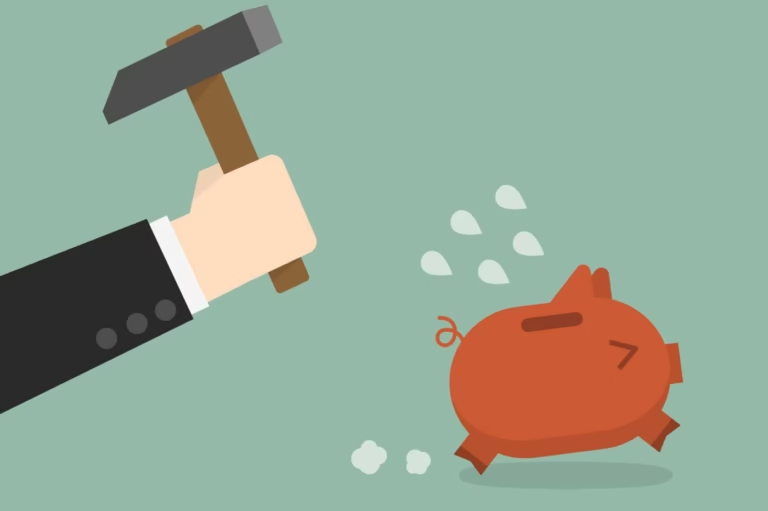Greetings, financial readers! Today, we’re discussing a fundamental aspect of financial planning: the “Emergency Fund.” Think of it as your financial umbrella, ready to shield you from unexpected storms that life may throw your way. Building an emergency fund is not just about preparing for the worst; it’s about providing peace of mind and ensuring you have a safety net when you need it most. Let’s explore the importance of having an emergency fund and how to build one effectively.
Table of Contents
Emergency Fund: Your Financial Safety Net
Imagine your emergency fund as a sturdy shelter amidst life’s unpredictable weather—a buffer against financial turbulence that allows you to weather storms with confidence. It’s like having a financial first-aid kit, ready to address unexpected expenses and unforeseen circumstances.
Cracking the Code: What is an Emergency Fund?
An emergency fund is a pool of readily accessible savings set aside for unexpected expenses or financial emergencies. It’s a cash reserve specifically earmarked to cover essentials like medical bills, car repairs, home maintenance, or sudden job loss without resorting to high-interest debt or disrupting long-term financial goals.
Key Components of an Emergency Fund:
- Liquidity: Emergency funds should be easily accessible in times of need, typically kept in a savings account or a money market fund.
- Size: The size of your emergency fund depends on your individual circumstances, such as monthly expenses, income stability, and potential risks.
- Purpose: The primary purpose of an emergency fund is to cover unexpected expenses or income disruptions, providing financial stability during challenging times.
- Replenishment: It’s essential to replenish your emergency fund after using it to ensure you’re always prepared for the next unexpected event.
Why an Emergency Fund Matters:
- Financial Security: An emergency fund provides a safety net, offering peace of mind knowing you have a financial cushion to fall back on in times of need.
- Debt Prevention: Having savings readily available helps avoid reliance on high-interest debt, such as credit cards or payday loans, which can lead to a cycle of debt.
- Stress Reduction: Financial emergencies can be stressful, but having an emergency fund in place can alleviate anxiety and uncertainty during challenging times.
- Flexibility and Independence: An emergency fund provides financial flexibility, allowing you to handle unexpected expenses without relying on external assistance.
- Protection of Long-Term Goals: By covering unexpected expenses with an emergency fund, you can avoid dipping into retirement savings or other long-term investments, preserving your financial future.
How to Build an Emergency Fund:
- Start with a Goal: Aim to stash away at least 3 to 6 months’ worth of living expenses. This cushion should cover essentials like rent, utilities, groceries, and any other must-haves if you hit a rough patch.
- Calculate Your Expenses: Take a good, hard look at your monthly expenses. Add up everything from rent/mortgage to groceries, insurance, debt payments, and utilities. Knowing how much you spend each month gives you a clear target to shoot for with your emergency fund.
- Consistency is Key: Make regular contributions to your emergency fund. Whether it’s weekly, monthly, or whenever you get paid, setting aside a fixed amount helps you build your fund over time without feeling the pinch too much.
- Separate and Sacred: Keep your emergency fund separate from your regular checking account. It’s too easy to dip into it for non-emergencies if it’s just sitting there alongside your spending money. Consider a high-yield savings account or a separate savings account specifically earmarked for emergencies.
- Adjust as Needed: Life changes, and so do your expenses. If you get a raise, adjust your emergency fund goal accordingly. Likewise, if your expenses decrease (maybe you paid off a loan or downsized), you might need less in your fund.
- Prioritize High-Interest Debt First: Before going all-in on your emergency fund, consider tackling high-interest debt like credit card balances. Paying down debt saves you money in the long run and can free up more cash flow to beef up your emergency fund later.
- Stay Flexible: Emergencies come in all shapes and sizes—car repairs, medical bills, job loss, you name it. Your emergency fund should be flexible enough to cover any of these scenarios without leaving you high and dry.
Remember, building an emergency fund is like planting seeds for your financial future. It might not seem like much at first, but with time and consistency, it’ll grow into something that can weather even the stormiest of financial seasons.
Replenishing and Maintaining Your Emergency Fund:
- Reassess Regularly: Periodically review your emergency fund to ensure it remains adequate based on changes in your financial situation or life circumstances.
- Replenish After Use: If you need to use funds from your emergency fund, make replenishing it a priority to restore your financial safety net.
- Adjust as Needed: As your financial situation evolves, adjust the size of your emergency fund accordingly, taking into account changes in income, expenses, and financial goals.
In Conclusion
An emergency fund is the cornerstone of financial resilience, providing stability and security in the face of life’s unexpected challenges. By prioritizing the establishment and maintenance of an emergency fund, you can navigate financial storms with confidence, knowing you have a solid financial foundation to rely on. So, may your emergency fund be robust, your finances secure, and your path forward paved with peace of mind. Happy saving!


